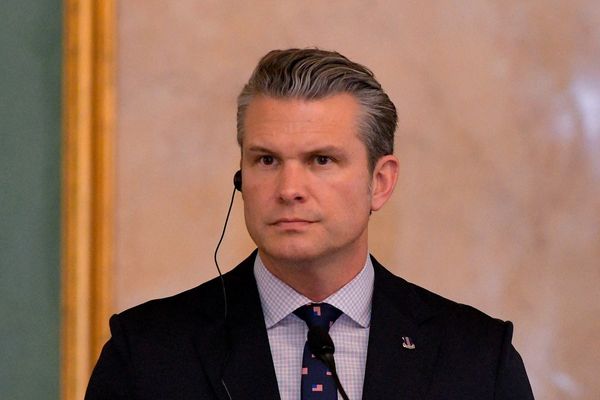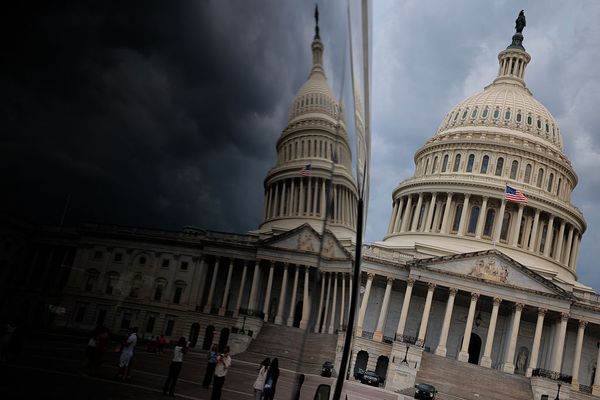
The Indian Navy didn’t attack Karachi, but your TV said it did — welcome to Noida’s finest fiction factory. In the great media bazaar, drama is demanded, lies are supplied and reality is politely ignored.
Misinformation everywhere is the phrase that best describes the state of large portions of the Indian media over the last few weeks, particularly social media, and the TV media based out of the Film City in Noida.
Between the social media and the TV media we were told that the Indian Navy had attacked and destroyed the Karachi Port. One TV channel even went on to claim that Pakistan was afraid of them (the TV channel that is). As it turned out, all of this was false.
Now, news, whether we like it or not, is an economic transaction. There is a supply side to it and a demand side. Over the years it has been well-argued that the supply side of news in India, particularly the TV channels operating out of Noida and the so-called national media based out of Delhi, have largely been indulging in propaganda. The TV channels more than the national media.
Or as Paul Joseph Goebbels, the minister of propaganda in Germany from 1933 to 1945, said: “If you tell a lie and keep repeating it, people will eventually come to believe it.”
What this basically means is that irrespective of whether a statement is true or false, belief in the “truth of the claim” goes up “as a function of repetition”. Or what is referred to as the illusory truth effect. As Sander van der Linden writes in Foolproof—Why We Fall for Misinformation and How to Build Immunity: “In other words, the more often you hear a statement, the more true it sounds.”
This is what the Noida-based TV media, often referred to as the Godi media, has specialised in over the last few years. And not surprisingly, this is the familiar road they took in the last few weeks.
They thought they were indulging in their usual propaganda but that went wrong on two counts. First, in this case the government had to hold press conferences and tell the nation what was happening on the India-Pakistan border. And these press conferences did not confirm what the TV channels were telling us. Second, some of the stuff that was said by the celebrity TV anchors – who were going all guns blazing from the safety of their studios – was incendiary and didn’t go down well with other countries.
I will leave the supply side of things here, given that much has been written about it already, and talk about the demand side.
The TV channels have an audience watching what is being broadcast. They have their set of biases as well and the propaganda of the TV channels feeds into these biases.
This situation is best explained by the novelist Joseph Heller in Something Happened. Bob Slocum, the lead character of the book is talking about a colleague of his, Mrs Yerger, when he says: “She was a positive, large woman of overbearing confidence and nasty amiability who never doubted the wisdom of her biases [emphasis added].”
There are a huge number of people out there who, with the wisdom of their biases, are sitting ducks for the propaganda unleashed by the Noida TV channels and that on social media. Given that they are not the ones fighting on the border — sitting comfortably in their drawing rooms, watching TV or scrolling through their phones — they wanted an overt war with Pakistan. A large section of the media just fed into this mental need.
Or as Linden puts it: “Our brains process information that we like or agree with faster than information which conflicts with our preconceptions about the world…We are biased in the sense that we are quicker to confirm and accept evidence that fits with our worldview.”
So, there is a market for misinformation, or if I were to put it directly, there is a market for lies. People want to be lied to. There is a demand for it. And hence, there is a supply.
As Abhijit Banerjee and Esther Duflo write in Good Economics for Hard Times: “Producing fake news is of course very cheap and very rewarding economically since, unconstrained by reality, it is easy to serve to your readership [or viewership for that matter] exactly what they want to read.” Or to put more succinctly, “the economic model that sustained journalism as a location for ‘public space’ (and correct information) is collapsing.” In this scenario, “without access to proper facts, it is easier to indulge in nonsense”.
And that’s precisely what has been happening for a while in the name of news. The latest conflict has only brought this phenomenon into sharper focus.
There’s more to the demand side of news.
First, people want novel information. They want excitement. Something which they can share with friends and family. Which is why a false news-item like the Indian Navy attacking the Karachi Port went viral.
As Robert Shiller writes in Narrative Economics—How Stories Go Viral & Drive Major Economic Events: “People are “more likely to share novel information.” In other words…[there is an]…urge to titillate and surprise others.”
Even if a news-story is patently false, and the person forwarding it knows it's false, they might still forward it just to surprise others. Like in the last few days I have received multiple forwards on WhatsApp telling me that the former Pakistani cricketer and Prime Minister Imran Khan has died. Quite a few of the people who sent me this information knew that it was false, but they sent it nonetheless.
Second, misinformation or fake news isn’t really new. It has been around forever. Or as Shiller writes: “‘Fake news’ is not new. In fact, people have always liked amusing stories and they spread stories that they suspect are not true… In other words, at some level, many people enjoy believing the story and do not care about its factuality.”
Earlier this happened through word of mouth, thus limiting the audience. Of course, the rise of social media has made the sharing of fake news a lot easier. As van der Linden writes: “Research finds that one problematic consequence of being repeatedly exposed to fake news is that, over time, people find it less unethical to share misinformation because it starts to feel true [emphasis in the original].”
And given that, there is an incentive for people to manufacture fake news and make money in the process or simply have fun doing it. So, many of those on the supply side, choose to cater to this demand.
Third, as I mentioned earlier, we all tend to seek out information that reinforces what we already believe — or what we wish were true. This feeds into the demand for fake news and misinformation.
Or as Evan Davis writes in Post Truth—Why We Have Reached Peak Bullshit and What We Can Do About It: “Like-minded groups of individuals share a narrative about many things… These narratives are sometimes true, sometimes not, but they are often like stereotypes… Once embedded in our minds, though, they can easily gain excessive traction and trample over truth as willing believers put too much weight on propositions that conform to their narrative without looking for evidence in support of them.” This also helps individuals in not being socially isolated. It gives them something to talk about and continue to maintain good relations with friends and family.
Fourth, social media and 24/7 news television has the capacity for endless repetition or what is more technically referred to as the creation of echo chambers. As Banerjee and Duflo write: “The problem with echo chambers is not just that we are only exposed to ideas we like; we are also exposed to them again and again and again, endlessly.”
The supply side of news creates this loop and in the process hopes to make money from it. Of course, and not surprisingly, many people end up believing what’s dished out to them.
Fifth, this is not to say that no one has an open mind. There are people out there who really want to understand things, but probably don’t have the time or the mental bandwidth to do so.
In fact, Eldar Shafir, a behavioural scientist, developed the concept of cognitive bandwidth. Linden explains this concept: “If you’re relatively poor, your attention is occupied with working out how to pay the bills, putting out fires, and making ends meet.” This leaves very less time to sit and understand complex issues, which anything to do with international geopolitics, usually is.
The supply side of news caters to this kind of audience as well, through endless repetition in short bursts.
Sixth, the supply side of news manages to sway fence-sitters simply through the sheer confidence with which it delivers misinformation and fake news. The audience tends to mistake confidence for competence. And this can be dangerous.
Or as Vivek Nityananda writes in Beyond Doubt—Overconfidence and What It Means for Modern Society: “In the absence of enough information, we can look to the confidence of others. However, this trust in confidence hinges on one crucial information: that confidence is a sign of true competence.”
The trouble is that anyone who is truly competent about a complex issue will always add ifs and buts and maybes in what they have to say. And the moment that is done the argument on offer will sound less confident and by that very definition will come across as less convincing.
Or as Nityananda writes: “Having a more well-rounded argument seems to make for a less convincing argument. So, while you might be less deceived, you could also have a reduced ability to convince others of your argument.”
The supply side understands this and thus likes to address their market for lies, by keeping their lies short, sweet and simple.
Finally, the funny thing is that news is not the only business being impacted by the dynamic I have tried to explain up until now. Take the case of trading in futures and options on stocks, something that has really taken off in the last few years.
In 2015-16, the total number of contracts of futures and options on stocks traded on the National Stock Exchange, the largest stock exchange in India, stood at 0.35 billion. In 2024-25, the last financial year, it stood at 103.29 billion.
How did such a huge jump come about? There were multiple reasons for it. The rise of cheap smartphones and cheap internet. The rise of low cost stock brokerages allowing people to trade anywhere and everywhere on their smartphones using apps. And so on.
But there is another important reason. The stock brokerages paid financial influencers to basically go out there and lie confidently, that it was easy to become rich by trading in futures and options. In that way they cashed in on the market for lies that already existed. In their minds many people believe that it is easy to become rich quickly.
When the financial influencers delivered that message confidently, it only reaffirmed what many people already believed in. And trading in futures and options was their highway to that richness. Turned out it wasn’t, with 90 percent of those who traded in futures and options ending up losing money.
Or take the case of all the cricket betting/gaming apps which have come up and are being advertised by male-players representing the Indian cricket team. As this March 2025 news report points out, the total number of subscribers of Dream XI, which is one such app, is supposed to be around 22 crore.
So, what are the members of the Indian cricket team advertising such apps basically telling the world at large? That it is easy to become rich by playing these games. But is that really the case?
To conclude, there is a market for lies out there and firms have an incentive to cash in on it. Indeed, it is worth remembering something that the Wall Street Journal writer Jason Zweig learnt from his father:
There are three ways to make a living:
1) Lie to people who want to be lied to, and you’ll get rich.
2) Tell the truth to those who want the truth, and you’ll make a living.
3) Tell the truth to those who want to be lied to, and you’ll go broke.
The rest is commentary.
In the end, misinformation thrives not just because it is supplied, but because it is eagerly consumed. As truth becomes complex, slow, and often inconvenient, lies offer simplicity, speed, and emotional gratification. The media, financial influencers, and even celebrities tap into this demand, spinning narratives that cater to our biases and desires. The real danger isn’t just in the falsehoods themselves, but in how willingly we accept them. As long as there’s a market for lies, someone will be there to sell them. And as long as the circus entertains, few will bother to question what’s behind the curtain.
Meanwhile, I am going broke writing such stuff, and trying to tell the truth to those who want to be lied to. Okay, that was also a lie.
Vivek Kaul is an economic commentator and writer.
If you liked this piece, let our reporters tell you why you should subscribe to Newslaundry.
Newslaundry is a reader-supported, ad-free, independent news outlet based out of New Delhi. Support their journalism, here.







